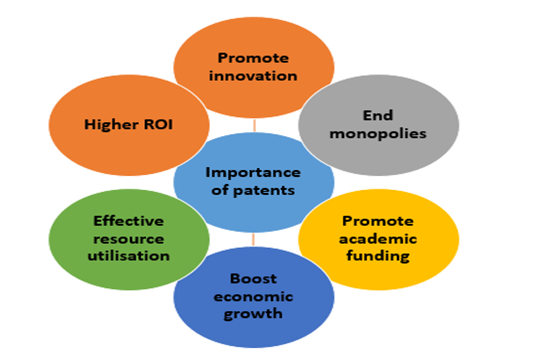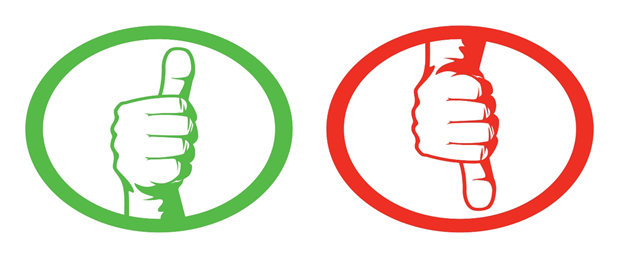What is patent?
A patent is an exclusive right awarded to an inventor for innovation, process, or design for a comprehensive disclosure of the invention for a designated period. Patents are usually approved by Government agencies, like the USPTO (U.S. Patent and Trademark Office) in the United States. Patents are intended to protect the originality of the process, design or invention that is new and useful. A registered patent helps the inventor/owner exploit it commercially during the patent term. It even helps the owner license his right to others to use his innovation or even sell it. The only thing required to get a patent is a formal application to be lodged before the invention is publicly disclosed.
Summary
- A patent is an exclusive right awarded to an inventor for an innovation, process, or design.
- Patents allow holders to have control overuse of the invention and its sale.
- Patent protection only lasts for 14 to 20 years, after which they expire.
Frequently Asked Questions (FAQ)
What is the process for patent application?
- The first step in a patent application is to research all other similar inventions and determine if an existing patent covers the same. Inventors can figure this out from the patenting authority’s database.
- The invention for which one is applying for patents must be either different or an improvement of a previous patent.
- Applicants need to maintain accurate design process details and/or steps taken to create the invention. It should include all drawings, descriptions, and claims related to the invention.
- Freedom on enforcement of the patent is provided to the person or entity applying for the patent.
- Applicants also need to submit all the specified documents and, depending on the patenting authorities’ modus operandi, pay an application fee.
- A formal declaration may also be needed, confirming the originality and genuineness of the invention or improvement. This must be signed and submitted by the inventor.
- The completed application is then reviewed by patenting authority and either approved or denied.

Image Source: © Wrightstudio | Megapixl.com
What are the different types of patents?
Commonly patents are classified as the following two types in accordance with the U.S. Patent and Trademark Office-
Utility patents- these protect the way working process of an invention that serves a purpose. It often lasts for 20 years, and often the inventor needs to pay a maintenance fee. It covers the following five categories of inventions under it-
- A process or a sequence of activities like a computer algorithm or code.
- A machine used for manufacturing.
- An item or a product being manufactured.
- Any kind of improvement to an existing idea.
- A composition of a product, like a recipe or a chemical formula.
Design patents- are granted for an original design for a decorative purpose or created to embellish a product. However, it is not granted to a purely two-dimensional design. These often last for 14 years but are not useable as functional items. These are granted for the design of an object and not the object.
What protection does a patent offer to its holders?
Patents protect a new product, composition or process and the aligned prospects of long-term commercial gains on it. Patents allow holders to have control overuse of the invention and its sale. Even after a competitor improves the original invention, a license or a patent purchase contract is required to exploit the improvement publicly or commercially. A patent also offers monopoly control for the duration mentioned in the registered patent. Only after the expiry of such period can the invention be used for making a profit. Patents provide protection and encourage further research, testing, other efforts, and spending to develop a new product, method, or process.
However, in return for such protection offered, the inventor must share know-how on the patent. Therefore, a detailed description of how it works must be made publicly available. It is essential as this information then becomes the basis for further research and subsequent inventions.
Why are patents important?
Patents are important because-

Image Source: Copyright © 2021 Kalkine Media
- Patents promote innovation, making the community creatively work for new and improved products and facilities. Consider the patents provided on medical innovations which help diagnose and treat diseases affecting the entire community.
- Patents end monopolies and reward inventors for the time and effort in creating new products and processes. The potential financial returns also become an incentive for innovation.
- Patents provide scope for academic recognition and promote funding at research institutions. Private investors may be reluctant to invest, develop, and exploit new technology without the protection offered by patents.
- Patents, therefore, act as an investment in economic growth. These stimulate the growth in industries and attract overseas investment. International companies exploit inventions for returns to inventors and access to foreign markets.
- Patents also play an important role in effective resource utilisation and knowledge sharing. Due to the cumulative nature of various research, knowledge sharing becomes important.
- Other than the above, patents are sometimes important for a company to have a strong market position. They reduce competition and help companies establish a place for themselves in the commercial market.
- In this way, patents help companies generate a higher return on investment. Having exclusive rights and inventors can obtain higher returns on investment, given the invention has economic utility.
What are the pros and cons of patents?
Before going into patenting an invention or a process, one must consider the following benefits and drawbacks of patents-

Image Source: © Marposta | Megapixl.com
Patents have the following benefits-
- It protects the invention from getting copied, manufactured, or sold without permission from the inventor.
- Competition on the patented product or process gets blocked for a pre-determined period.
- Patent holders can either use the patent for themselves or license it to others to generate revenue.
- Patents are easy to apply for and do not involve any difficult disclosures.
- Having patented goods adds to a company’s reputation in the market. When displayed on company websites help develop its brand image.
- They are an add on while valuing businesses. The intangible patent is assessed for the overall valuation of a business, especially during an acquisition/merger.
- Patents allow holders to enforce their rights when infringed by a third party, stopping them from using the invention.
On the other hand,
Patents also carry the following drawbacks-
- Having a patent means the know-how of the invention becomes publicly available, making it easy for knowledgeable competitors to overpower with improved versions.
- Patent applications and approvals can sometimes be time-consuming and lengthy. This is bad because their utility may die by when patents are granted.
- Patents are also costly, and if innovation is not successful, one may not be able to generate the required ROI for inventors or patent holders.
- If the patent’s scope is too narrow or too wide, wealthy competitors can easily replicate or take benefit out of it.
- Patent protection only lasts for 14 to 20 years, after which they expire. Although they can be reissued, the time taken is much, and as soon as patents expire, and competitors flood their products in the market.
- Patents also carry some regulatory or legal risks as others may claim infringement on their patent.
 Please wait processing your request...
Please wait processing your request...